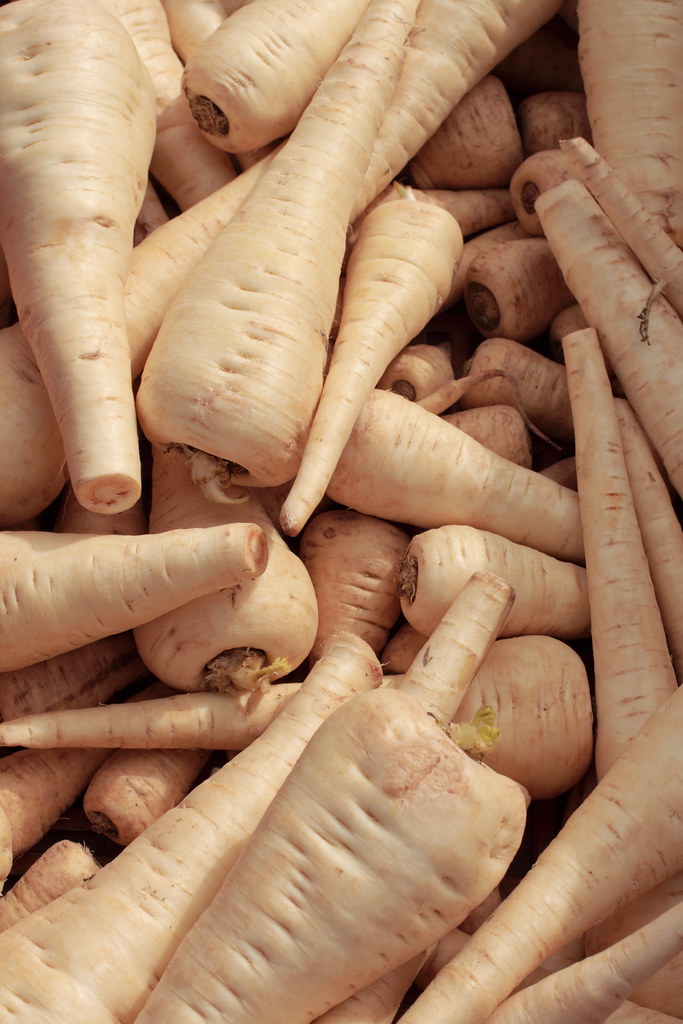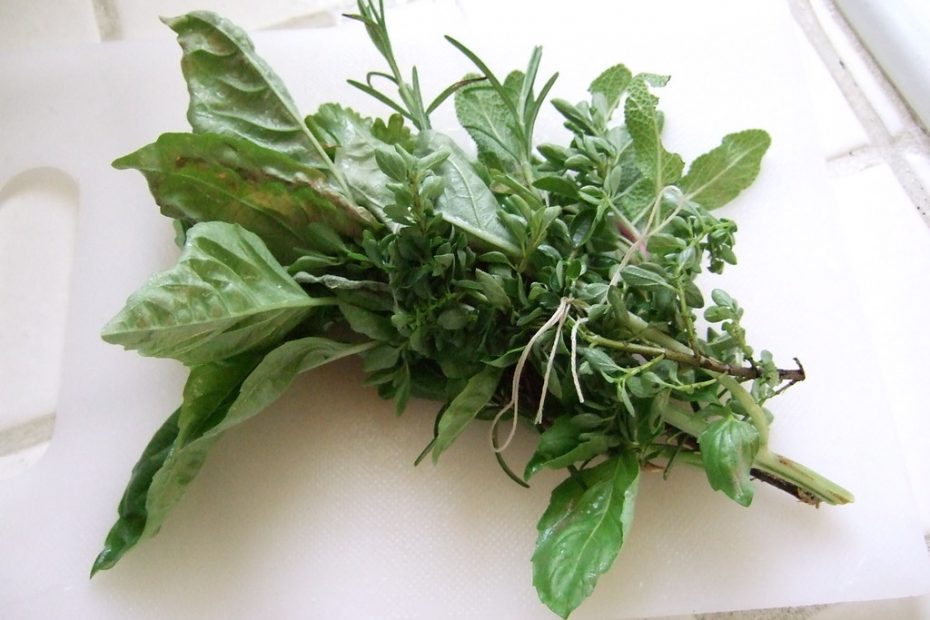When adding delicous fresh herbs to my meals I’ve often wondered how many calories – if any – I way adding with every serving. Counting calories for every meal can be a daunting process but should you calories in herbs? Do herbs even have calories?
All herbs have some calories although the amount is usually negligible. A tablespoon of fresh leafy herbs like basil, mint, or parsley only has about 1 calorie. Other herbs with denser leaves such as oregano and thyme can contain up to 3 calories per tablespoon.
Let’s look at how we can measure calories in herbs in a bit more detail. We’ll cover how many calories each herb actually has and whether you should worry about counting them in your meals. We’ll also discuss the other nutrients that are in herbs besides raw calories!
How many calories do herbs have?
One tablespoon of fresh herbs typically contains between 1-3 calories. Herbs with denser leaves like Marjoram, Oregano, Tarragon, and Thyme contain up to 3 calories per tablespoon while basil, cress, or dill are often considered to have almost none.
Here’s a list of the most common herbs and their caloric value:
| Herb | Serving | Calories |
| Chives | 1 tbsp (3 g) | 1 cal |
| Cilantro | 1/4 cup (4 g) | 1 cal |
| Coriander | 1/4 cup (4 g) | 1 cal |
| Mint | 1 tbsp (1.6 g) | 1 cal |
| Parsley | 1 tbsp (3.8 g) | 1 cal |
| Rosemary | 1 tbsp (1.7 g) | 1 cal |
| Basil | 1 tsp (0.7 g) | 0 cal |
| Cress | 1 sprig (1 g) | 0 cal |
| Dill | 5 sprigs (1 g) | 0 cal |
| Marjoram | 1 tbsp (1.7 g) | 3 cal |
| Oregano | 1 tsp (1 g) | 3 cal |
| Tarragon | 1 tbsp (1.8 g) | 3 cal |
| Thyme | 1 tsp (1 g) | 3 cal |
As you can see, all of the most common herbs contain very few calories, especially when used in moderation. Naturally, the number of calories will depend on the amount you will use in your cooking.
Herbs that contain the most calories
Herbs that contain the most calories are Marjoram, Oregano, Tarragon, and Thyme. Generally speaking, herbs with denser leaves that contain less water, contain more calories. Thus, the leaves of these four herbs tend to be more calorie-dense than leafier herbs such as basil.

In addition, it can make a difference whether the herb you are using is fresh or dried. Dried herbs will also contain more calories per tablespoon since they contain less water. Herbs with denser leaves like Oregano and Tarragon are mostly used in dried from which can add to the total calorie count.
Herbs that contain the most calories are:
- Tarragon: Tarragon (artemisia dracunculus) is actually a member of the sunflower family and is also known by the name estragon. It is common in most of Asia, Europe, and North America.
- Oregano: Being part of the mint family of herbs oregano is native to the Mediterranean region of Southern Europe. As such it is used plentifully in Italian cooking.
- Thyme: Although thyme comes in many different varieties the one that is used in cooking is thymus vulgaris. It is also part of the mint family of herbs.
What about spices?
When talking about the calories in herbs I would be remiss if I didn’t mention spices. Spices are made from the seeds of herbal plants and usually ground up for easier use. Spices – and seeds for that matter – can contain many more calories than their herbal counterpart.
Take a look at the calories in sesame seeds, cinnamon, and paprika:
| Spices | Serving | Calories |
| Sesame Seeds | 1 cup (144 g) | 825 cal |
| Cinnamon | 1 tbsp (7.9 g) | 17 cal |
| Paprika | 1 tsp (2.3 g) | 6 cal |
Sesame seeds and all other herb seeds are very calorie-dense and can contain several hundred calories per serving.
One cup of sesame seeds contains more than 800 calories! When used to carelessly, cinnamon can also increase your calorie count by a lot. Just one tablespoon will add about 17 calories to your meal. Lastly, paprika spices can also add to the total caloric intake at around 6 calories per tablespoon.
Should you count calories in herbs?
The number of calories found in herbs is negligible and does not significantly affect your daily caloric intake. If you are already counting the calories in every meal it is probably not worth the extra effort counting every single calorie in the herbs you add.

However, there are some exceptions to this. Since herbs are versatile plants that can be used and prepared in many different ways, sometimes it may be wise to include herbs in your calorie count.
Here are some tips on when to count calories in herbs:
- Using an herb as a vegetable: Vegetables are typically used in larger quantities than herbs and tend to form the basis of a meal. Herbs are generally not considered vegetables but sometimes are used as such. If you use large quantities of herbs – for instance, dill in potato salad or basil in pesto – it is worth making the extra effort to count the calories.
- Eating the root: Another exception to the negligibility of calories in herbs is the roots. Herb roots are much more calorie-dense than the leaves. For instance, when adding parsnip root to a dish you should always count the calories as they often add up to several hundred calories per serving.
- Large amounts of spices: If you like your dishes well-spiced be careful with counting calories. Spices are more condensed forms of herbs made from their seeds and contain many more calories than the fresh herb leaves. Cinnamon, for example, contains up to 20 calories per tablespoon!
Other nutrients in herbs
While calories are an important measure of a food’s nutritional density, there are also many other nutrients that affect our bodies. Such micro-nutrients are vitamins and minerals which are also found in herbs.
When looking at the caloric value of a herb don’t forget about these valuable minerals and vitamins many herbs provide:
- Vitamin A: As one of the four fat-soluble vitamins, Vitamin A is crucial to our body’s well-being. Herbs like basil contain around 5% of your daily recommended intake of Vitamin A in a single tablespoon!
- Vitamin C: Everybody knows that you should get your daily dose of Vitamin C. And a cup of dill springs will accomplish just that. Dill contains copious amounts of Vitamin C and covers 12% of your daily needs with just one cup of springs.
- Calcium, Iron, Magnesium: Tarragon is a true powerhouse of vital minerals. Just one tablespoon of ground tarragon covers 5% of your Calcium needs, 8% of Iron, 4% of Magnesium.
Conclusion
Herbs contain calories. All plants do. However, the calorie amount in most herbs is so low that it will barely affect your body. The only time you should worry about calories in herbs is when you are using huge amounts or eating the herb roots.
And besides calories, there are so many other benefits to using herbs in cooking. For one, they taste amazing! But more than that, herbs are a dense pack of nutrients from Vitamin A to Calcium and Magnesium.
So, add herbs freely to your meals and enjoy 😉
“Herb Bundle” by Living in Monrovia is licensed under CC BY-SA 2.0; “Parsnip” by ©HTO3 is licensed under CC BY-SA 2.0; “Fresh Thyme” by cookbookman17 is licensed under CC BY 2.0
- Are Herbs Perennial? - January 29, 2021
- Can Herbs Survive Winter? - January 28, 2021
- Can Dogs Eat Herbs? - January 27, 2021
